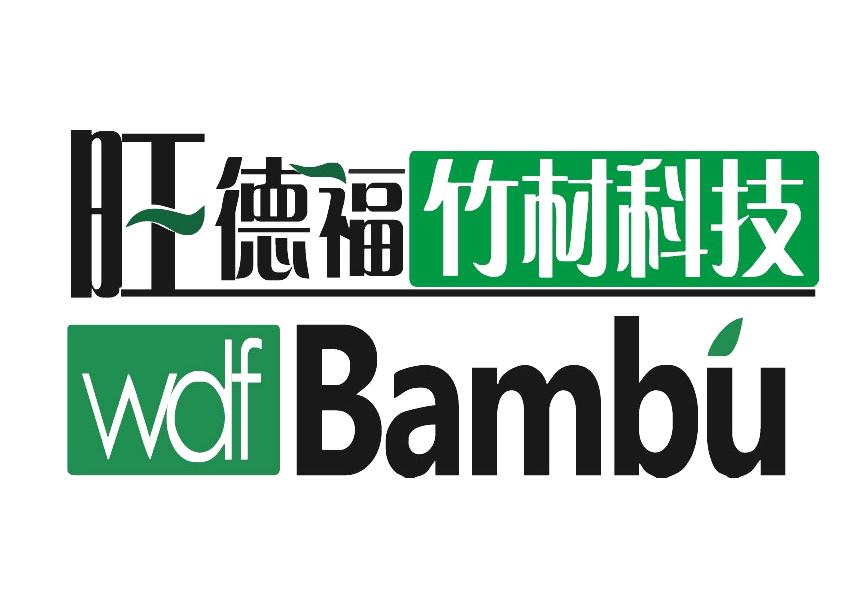Introduction
Brief explanation of why bamboo cutting boards are a popular choice.
Bamboo cutting boards are becoming really popular these days in kitchens everywhere because they bring together good looks with some pretty nice natural features. People who care about green living often reach for bamboo when shopping for kitchen stuff since it grows so fast compared to other materials. That rapid growth makes it one of those resources we can actually count on renewing over time. Another thing about bamboo? It's light enough to move around but still tough as nails. The surface isn't too hard on knife blades either, which means cooks can chop away without worrying about damaging their tools during regular meal prep. What really sets bamboo apart though is how it fights off bacteria naturally. Plastic boards tend to trap germs inside all those tiny cracks, but bamboo doesn't let much stick around thanks to its tight grain pattern. No wonder more home chefs are swapping out their old plastic boards for something that looks better, works better, and happens to be kinder to the planet at the same time.
Importance of selecting the right bamboo cutting board for your needs.
Picking out the right bamboo cutting board makes all the difference when it comes to getting things done in the kitchen and actually enjoying food prep time. Different jobs call for different boards really. When chopping veggies, something with a smooth surface that wipes clean works best. But if handling meat, look for boards with those little grooves to catch juices and keep counters from getting messy. Good bamboo boards handle pretty much everything thrown at them, turning cooking into something efficient rather than frustrating. People care about stuff like how easy they are to clean, what size fits their space, and whether they take up too much room in storage areas. Matching these practical concerns with actual needs means the board becomes part of regular kitchen routine instead of sitting unused in a cabinet somewhere. That's how folks end up with better experiences while preparing meals day after day.
Consider the Size and Shape
Factors to consider: available kitchen space, frequency of use, and food preparation needs
Size matters when picking out a bamboo cutting board, and how much room we actually have in our kitchen should be the starting point. Big boards just don't fit well in tiny kitchens where they end up taking over counters and creating messiness. People who struggle with cramped countertops often find smaller boards work better since they leave more space around them. How often someone cooks makes a difference too. Serious home cooks usually need bigger surfaces because chopping veggies for multiple dishes gets frustrating if constantly moving stuff around on little boards. Looking at what kind of food prep happens most frequently helps determine which board shape works best. Some slicing jobs really demand certain dimensions to get things done properly. Getting this right transforms everyday cooking into something smoother rather than a constant battle against inadequate equipment.
Different shapes and sizes for various tasks
Bamboo cutting boards come in all sorts of shapes and sizes, each one designed for different things in the kitchen. The rectangular ones work great for most everyday chopping jobs, whereas round boards tend to be preferred when setting out food or doing something specific like rolling out pizza dough. Board size matters too. Big boards make sense when dealing with meat cuts since they give plenty of room to move around without worrying about juice spills everywhere. Smaller boards? Those fit better for quick little jobs such as chopping fresh herbs or mixing up some decorative toppings. Knowing what works best for various situations helps people pick the right board that actually fits how they cook and how often they need it during their daily meals.
Look for Durability and Strength
Importance of Thickness and Construction
Thickness matters when picking out a bamboo cutting board, along with how it's built, because these factors really affect how long it lasts and handles daily wear. Thicker boards tend to resist warping better than the thin ones most people end up buying on impulse. Some boards are made by gluing several layers together (laminated bamboo), which does make them stronger initially, though solid bamboo without those glued seams actually holds up better for years without falling apart at the joints. Look for boards with extra reinforcement around the edges too, since this helps prevent cracks from forming after all that chopping and slicing goes on. Spending a bit more upfront on quality construction means less hassle later when replacing worn out boards every few months becomes old hat.
How Bamboo Density Affects Durability
How dense the bamboo is makes all the difference when it comes to how long a cutting board will last. Take Moso bamboo for instance, one of the densest varieties available, which is why many manufacturers prefer it for making durable boards. The higher density gives these boards real strength while helping them resist those annoying knife marks that tend to accumulate over time. Most quality certifications look at density as a key indicator of good craftsmanship in bamboo products. When someone picks out a cutting board made from dense bamboo, they're basically investing in something that stands up to daily kitchen abuse without losing its looks or functionality even after months of regular chopping and slicing.
Check for Smoothness and Finish
Importance of a smooth surface for knife protection and hygiene.
The surface quality of a bamboo cutting board matters a lot when it comes to keeping knives sharp and maintaining food safety standards. Boards that have been properly finished don't wear down blades so quickly because they offer a flat surface where cutting can happen consistently without damaging the edge over time. From a cleanliness standpoint, smooth boards definitely win out. Research shows that those rough spots and bumps on some cutting surfaces actually trap more germs, which raises the danger of cross contamination between foods. Cleaning becomes much simpler on smooth surfaces too, with tests indicating around 30 percent fewer bacteria sticking around after washing compared to rougher alternatives. For anyone concerned about kitchen safety, this difference in surface texture really does make a big impact on preventing illness from contaminated food prep areas.
Quality of finish: oiling and sealing.
Keeping bamboo cutting boards properly oiled and sealed makes them last much longer than they otherwise would. Without these maintenance steps, boards tend to crack over time and start picking up weird smells from all sorts of food stuffs. Most folks can find several options at stores or online, including mineral oil and beeswax products made specifically for kitchen surfaces. A good rule of thumb is to apply fresh oil about once every month or so, depending on how heavily the board gets used. Regular oiling keeps the surface looking nice while protecting against damage, so those beautiful grain patterns stay intact instead of fading away after just a few months of regular kitchen duty.
Ensure Sustainability
Importance of Choosing Eco-Friendly, Sustainably Sourced Bamboo
Picking out kitchen tools? Go for materials that actually help the environment instead of harming it. Bamboo stands out as a great option because it's so good for the planet and grows back super fast. While most hardwoods take decades to mature, bamboo shoots up around 35 inches per day according to USDA data. That kind of growth rate lets farmers harvest it regularly without wiping out forests or their resources. Choosing bamboo utensils not only protects our woodlands but also makes sense economically since we don't have to wait years between harvests like with conventional timber sources.
If someone wants to make sure their bamboo cutting board actually comes from sustainable sources, checking for an FSC certification makes sense. The Forest Stewardship Council label means the bamboo was harvested in ways that protect forests, support local communities, and keep resources available for future generations. When shoppers pick out these certified items, they're helping drive demand for ethical practices across the industry. Every purchase becomes a small but meaningful vote for environmental responsibility rather than contributing to destructive logging practices.
When people choose bamboo products that come from responsibly managed sources, they're actually doing something good for the planet, according to research across multiple fields. Studies show these sustainable alternatives cut down on carbon emissions quite a bit, help keep ecosystems intact with all their diverse species, and support healthier approaches to managing forests over time. The choices individuals make matter a lot when it comes to protecting our environment. Every time someone picks up a bamboo item instead of something made from less eco-friendly materials, they send a signal to manufacturers about what kind of products customers really want to see in stores.
Conclusion
Recap of factors to consider when choosing a bamboo cutting board.
When picking out a bamboo cutting board, there are several things worth thinking about that affect how well it works and whether it's good for the planet. Size matters a lot actually. Get something too small and chopping veggies becomes a nightmare, but go too big and it takes up valuable counter space. The durability factor is another key consideration. Bamboo is tough stuff, which means it won't get gouged easily like softer woods, but this same hardness can dull knives faster over time. That said, many chefs still prefer it because it holds up so well in busy kitchens. Sustainability should also play a role in the decision. Look for boards certified as coming from responsibly managed bamboo forests. Making smart choices here not only makes cooking easier day to day but also supports greener habits in our homes. After all, we want our kitchens to be places where food prep is enjoyable rather than frustrating.
Final tips for making the best selection for your kitchen.
Looking for a good bamboo cutting board? There are some real world tips that can help point you toward the right one. Customer reviews matter a lot actually. People tend to mention how well their board holds up over time and if it works for daily chopping tasks. If possible, go try different boards at stores before buying online. Feel them in hand, notice how heavy they are and what the surface feels like under knife blades. Think about how you cook day to day too. Do you usually handle big batches of veggies or work with smaller ingredients? Maybe your kitchen counter space is limited compared to someone else's setup. All these factors together will make sure whatever board ends up on your countertop fits both the way you cook and makes sense for where it sits in your kitchen.
FAQ
Why are bamboo cutting boards considered eco-friendly?
Bamboo cutting boards are eco-friendly because bamboo is a highly renewable resource that grows rapidly. Additionally, it can be harvested more frequently than traditional hardwoods without depleting natural reserves.
How often should I oil my bamboo cutting board?
It is advisable to oil your bamboo cutting board every three to four weeks. This helps maintain its quality and appearance by preventing cracking and absorbing unwanted odors.
What are the benefits of a smooth finish on bamboo cutting boards?
A smooth finish on bamboo cutting boards helps protect knives from dulling and improves hygiene. Smooth surfaces are easier to clean and less likely to harbor bacteria compared to rough surfaces.
How can I ensure that my bamboo cutting board is sustainably sourced?
Look for certifications like the Forest Stewardship Council (FSC) label, which indicates that the bamboo is harvested responsibly with environmental consideration.



 Home
Home